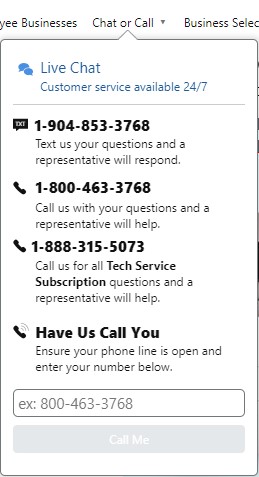Customer satisfaction.
Two words that can either cripple or skyrocket your eCommerce business.
It’s not hard to understand why customer service is so important.
On average, it’s about 6-7x more expensive to bring in new customers than it is to keep existing customers. And if you focus on delivering an exceptional eCommerce experience, you can ensure that your customers will keep coming back.
Let’s take a look at six simple customer satisfaction strategies that are easy to implement and can have huge dividends on your eCommerce customer satisfaction. Not to mention it helps your overall customer experience too!
→ Related: How To Implement A Customer Service Strategy & Why You Should ←
1. Measure Customer Satisfaction
When it comes to customer satisfaction, you can’t set a goal for yourself until you know how you’re already doing. That means the first thing you need to do is measure customer satisfaction.
There are a few ways to do this. Using a survey is a great option. You can either send a survey after a customer orders an item to learn more about their shopping experience, or even have a pop-up appear, asking a customer to give you feedback about their shopping experience. This article from Hubspot has some great information about how to build successful customer satisfaction surveys, and get your customers to take them.
You can also take a look at a few other key metrics of your website that you’re probably already measuring:
- Conversion rate – This compares the number of visitors to your site vs. how many of them make a purchase.
- Bounce rate – This indicates the number of customers who visit a single page of your website, and then navigate away without clicking another page. Lower is better.
- Cart abandonment rate – This represents the percentage of shoppers who have an item in their shopping cart, but never complete the checkout process. Lower is better.
- Repeat Customer Rate (RCR) – This represents the percentage of customers who have purchased an item from your store more than once. Higher is better.
First response time – If you are using a customer service platform or software, it probably measures metrics like First Response Time (FRT) and average handling time (AHT). These metrics indicate how long it takes you to respond to a customer, and resolve their issue, and can usually be found in the reporting dashboard of your customer service software.
By measuring these metrics, you can get a good idea of where your website is succeeding – and what you could improve.
For example, if you have a high bounce rate, but also have a high Repeat Customer Rate, this could indicate that your website is not easy to navigate – but that customers who manage to purchase an item from your store tend to come back and shop with you again.
→ Related: What eCommerce Shoppers Really Want From Customer Service ←
2. Create Easy Navigation
Navigation and interaction issues can seriously damage your customer satisfaction. A customer comes to your store for one reason – to shop! That means you need to make the user experience as seamless as possible.
Follow conventions and design best practices – such as using breadcrumbs to help with navigation, allowing your products to be filtered by category, and putting the navigation at the top of the page. This blog from Optimizely has collected quite a few of these best practices – so check it out, and see how you can use these tips to design a better website.
Here’s a good example of great navigation menu from The Popcorn Factory: 
Each category is easy to select, breadcrumbs are used to help the user keep track of where they are, and the user can filter their results further to find the item they’re looking for.
In contrast, the navigation menu below from blinkee.com blends into the page and is dwarfed by the ginormous images. Plus, there are no filtering options.

3. Keep the Checkout Simple
Even if you provide a great shopping experience, users will still abandon their shopping carts if you make the checkout process too complicated.
One of the most common reasons for cart abandonment is a confusing or complicated website checkout design – 9% of surveyed customers said they would stop shopping if they had trouble understanding the checkout process.
Crate&Barrel does a great job of simplifying the shopping cart:

A shopper can clearly see all the steps involved in the checkout process with the simple 3-step timeline at the top of the form. Plus, the Next button is clearly defined, leaving no room for doubt what the next step is in the checkout process.
For more information about streamlining the checkout process, take a look at this article we posted last year. Or, if you’re a Magento user, learn how to cut your checkout time in half with Magento Instant Purchase.
4. Provide Plenty of Ways to Contact Customer Service
Great customer service is the #1 factor in determining how much a consumer trusts your company. One-third of customers say they are willing to switch brands after just a single poor customer service experience. According to Statista, 27% of surveyed customers say that “lack of effectiveness” is their #1 source of customer service frustration, while 12% said that “lack of speed” was the most common source of customer service frustration.
You get the picture – you need to make sure that your customers can contact your customer service team as quickly as possible. That means you need to include contact information for customer service on every page – including email addresses, online forms, phone numbers, and even social media and live chat options.
I’ve yet to find a website that offers so many ways to connect as Office Depot:
Live chat and texting and call back, oh my! This is what good customer service looks like.
The faster you can answer a customer’s question or resolve their issue, the more satisfied they will be – and the more likely they will be to continue doing business with you in the future.
5. Include Customer Reviews Wherever You Can
Customer reviews are a great way to build trust in your products and services. 90% of customers are influenced positively to make a buying decision when they read positive reviews of your products and services – and according to the Spiegel Research Center, displaying user reviews can boost your conversion rates by up to 270%, in some cases.
The screenshot below from Uniqlo is a great example of a good customer review section. You get a lot of information about each product in an easy-to-digest manner, with the ability to browse through plenty of reviews from people who have purchased the item.

Consider taking extra steps to request that customers review the items they purchase. This blog from Neil Patel is a great place to start, and goes over 10 tips and strategies you can use to get more product reviews – and boost customer satisfaction rates.
6. Make Sure You Deliver The Right Items At The Right Time
Your job isn’t over when your customer hits that “BUY NOW” button and completes their purchase, and you ship out their items. You need to ensure that you’re ready to deal with any potential shipping issues – and take care of your customers is something goes wrong.
In fact, shipping problems and delivery issues are one of the biggest sources of complaints when it comes to eCommerce. According to a study by Voxware, 29% of consumers will never shop with a company again if they receive the wrong item in their order by mistake. If you ship the wrong item 2 or 3 times, this number jumps to 63%.
Speed is another critical factor. According to the same study, 17% of respondents won’t shop with a company again if their item is late. Again, if this happens a second or third time, this number jumps to a stunning 55%.
Of course, you are not in complete control of the delivery process. Mistakes happen – but that’s why you need to make sure that you address any customer complaints related to the speed of delivery, or in the rare event that the wrong item is delivered, or an item is damaged upon arrival.
By doing so, you can turn an angry customer into a satisfied one – and increase the likelihood that they will buy from you again. 70% of unhappy customers who have their problem resolved are willing to do business with your company again.
Follow These Tips For More Satisfied Customers (And Profits!)
Feeling overwhelmed?
Not sure how to get started?
Don’t worry. We’re experienced eCommerce consultants, and can help you turn your business around, and get more satisfied, loyal, repeat customers. Contact us today to learn how we can drive your eCommerce growth.



Leave a Reply
You must be logged in to post a comment.